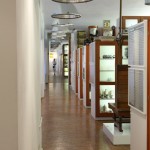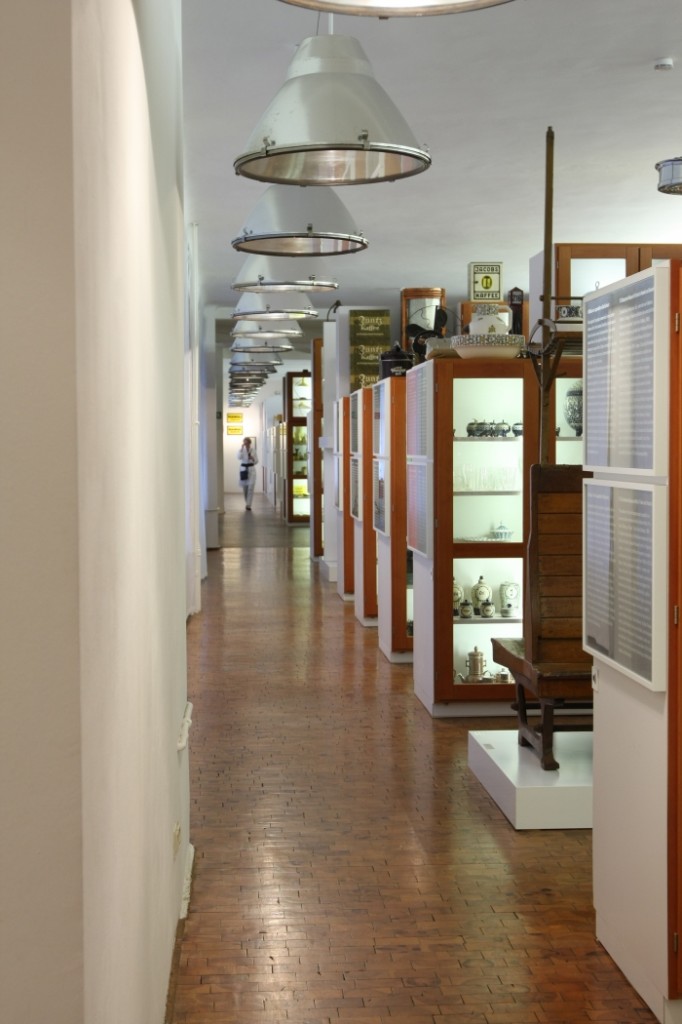In 1907 a loose association of German architects, artists and industrialists joined forces as the Deutsche Werkbund – the German Industrial Association. Principally established with the aim of helping German industry adapt to the technological advances of the age and so help them both prepare for the forthcoming industrialisation and ensure that the coming challenges were met with high quality products and healthy, happy workers, the Deutsche Werkbund founders were additionally motivated by a recently passed UK law which required all products from Germany to be labelled as “Made in Germany”: in effect a mark of inferior quality. And a clear and deliberate insult from one colonial power against another.
On May 16th 1914 the Deutsche Werkbund gathered in Cologne for their inaugural exhibition, one of the first major presentations of contemporary industrial products in Germany and as such a demonstration of the prowess of German industry of the day. It was in addition to become the occasion for a very public demonstration of the conflicts which plagued the young association.
Made in Germany – Politik mit Dingen. Der Deutsche Werkbund 1914 at Werkbundarchiv – Museum der Dinge Berlin
Taking the opening of the 1914 Cologne exhibition as its inspiration “Made in Germany – Politik mit Dingen. Der Deutsche Werkbund 1914” at the Werkbundarchiv – Museum der Dinge Berlin seeks to explore the economic and cultural ideals behind the Deutsche Werkbund’s philosophy and by extrapolation the role the Deutsche Werkbund played in the transformation of “Made in Germany” from a indicator of inferior quality to an internationally recognised guarantee of high quality.
To this end, in addition to a presentation in the museum’s special exhibition room, Politik mit Dingen weaves effortlessly through the Werkbundarchiv – Museum der Dinge’s permanent collection; the museum’s idiosyncratic display cases being partly given over to presentations explaining, for example, how and why “brands” arose, how they were marketed, how the rise of German industrial production was closely linked to the rise of German nationalism, or how the Deutsche Werkbund companies were the first to commission and employ designers in context of product development and corporate identity. And how through such co-operations the Deutsche Werkbund companies helped the likes of Wilhelm Wagenfeld or Peter Behrens establish their reputations.
And the importance of design to industry.
And that this focus on design led product development over profit led product development is one of the reasons “Made in Germany” is now such an internationally respected standard.
Going beyond such thematic and programmatic considerations one of the highlights of the exhibition is a scale model of the Glass Pavilion Berlin architect Bruno Taut created for the 1914 exhibition. Resembling a western European impression of an oriental temple the Glass Pavilion was created as a marketing vehicle for the German glass industry, and with its carefully designed illumination literally shimmered like a jewel on the exhibition site. Presented as a model, as the subject of a film and as a series of 3D images, the installation in the Werkbundarchiv not only brings Taut’s creation to life but helps the visitor understand just how the visitors in Cologne must have wondered and this glistening foretaste of what the equally glistening future would bring.
In addition to looking at the role the Deutsche Werkbund played in establishing German economic might, and nationalist pride, Made in Germany – Politik mit Dingen also briefly explains the so-called “typification debate” that raised its head in Cologne and, effectively, led to the movement’s later split, and so indirectly to the rise of the Bauhaus school. One the one side Hermann Muthesius and his predilection for set standards, for a predefined set of global forms on which industrial production and architecture should be based. On the other side Henry van de Velde and his call for the artistic freedom of all designers and architects to create that which they felt was appropriate and correct. A debate which, to be fair, rages as strongly today as it did for 100 years.
Made in Germany – Politik mit Dingen. Der Deutsche Werkbund 1914 isn’t a large exhibition, but is large enough to allow it to succinctly and deftly explain one of the most important moments in not only German design history but also Germany’s development to the economic centre of Europe it is today. And to do so in a way that is informative, entertaining and instructive.
Made in Germany – Politik mit Dingen. Der Deutsche Werkbund 1914 runs at Werkbundarchiv – Museum der Dinge Berlin, Oranienstraße 25, 10999 Berlin until Monday February 2nd. In addition to the exhibition itself the museum have also organised an accompanying fringe programme.
Full details can be found at www.museumderdinge.de

